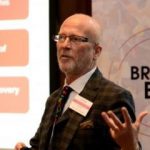Breaking Barriers:
Breaking Barriers Innovations Education to Employment Programme 2018:
Education to Employment Report
This is a report done by Breaking Barriers Innovations’ Education to Employment team on behalf of Sunderland City Council. The aim of this report is to present the findings from the engagement undertaken as part of the stage one Sunderland programme. The report is intended to provide a springboard for discussion and eventual decision making from major stakeholders within the city of Sunderland. The primary focus of the programme was to ensure the radical improvement of life chances of 16-19 year olds, particularly those NEET (not in education, employment or training) and from disadvantaged background.
OVERVIEW
The city of Sunderland has a good track record on growth and a strong vision for its long-term economic future, irrespective of impending challenges. Previously a city known for the ship building industry, it has received significant inward investment and has created new employment opportunities by building on its strengths and ensuring sufficient infrastructure is in place to provide a robust offering for its future generations.
However, as with many other cities across the country, Sunderland faces significant challenges. Not least, how can the life chances of those aged 16-19 be radically improved, particularly those amongst the city’s NEET population.
MAJOR CHALLENGES IDENTIFIED
The national and local education and skills context is rapidly changing – since the coalition Government’s education reforms, the relationship schools have with the local authority have fundamentally shifted. The evolution of academies and free schools have been paired with a greater focus on examinations and both a deeper and broader curriculum.
Locally, the reliance on a large single employer, in this instance Nissan, has prohibited growth in alternative sectors and in some instances has narrowed the prospects of young people.
The factors that influence young people are sophisticated and varied – despite a growth in alternative media and young peoples’ exposure to computers and mobile phones, parental influence remained the single strongest source. This is particularly important for social mobility of those from a disadvantaged background as preconceived ideas about subject selection, vocational education, and academic achievement come from a source that is not necessarily in receipt of out to date information.
Communication and relevance of the local education and employment offer – ensuring that there is effective communication of the local education to employment offer that is relevant to those targeted was not always achieved. This is partly because of a lack of understanding about whose responsibility such provisions are; confusion that has been exacerbated by recent education reforms.
INTERIM CONCLUSION POINTS
- There needs to be a more nuanced and sensitive analysis of education progress and attainment data
- There have been calls for greater collaboration across partners/partnerships with clear leadership to ensure skills an employment strategies are coordinated
- Parental engagement is widely viewed as the main source of influence for young people
- There are strong foundations, but the local education to employment offer needs to be communicated better
It is the aim of this interim report to present back the findings from a comprehensive programme of engagement which included stakeholders from industry, education, local government, and engagement with young people themselves. The findings of which can be used to highlight key issues not only facing Sunderland, but similar, comparable cities, too.
Report Authors

George Evans-Jones




